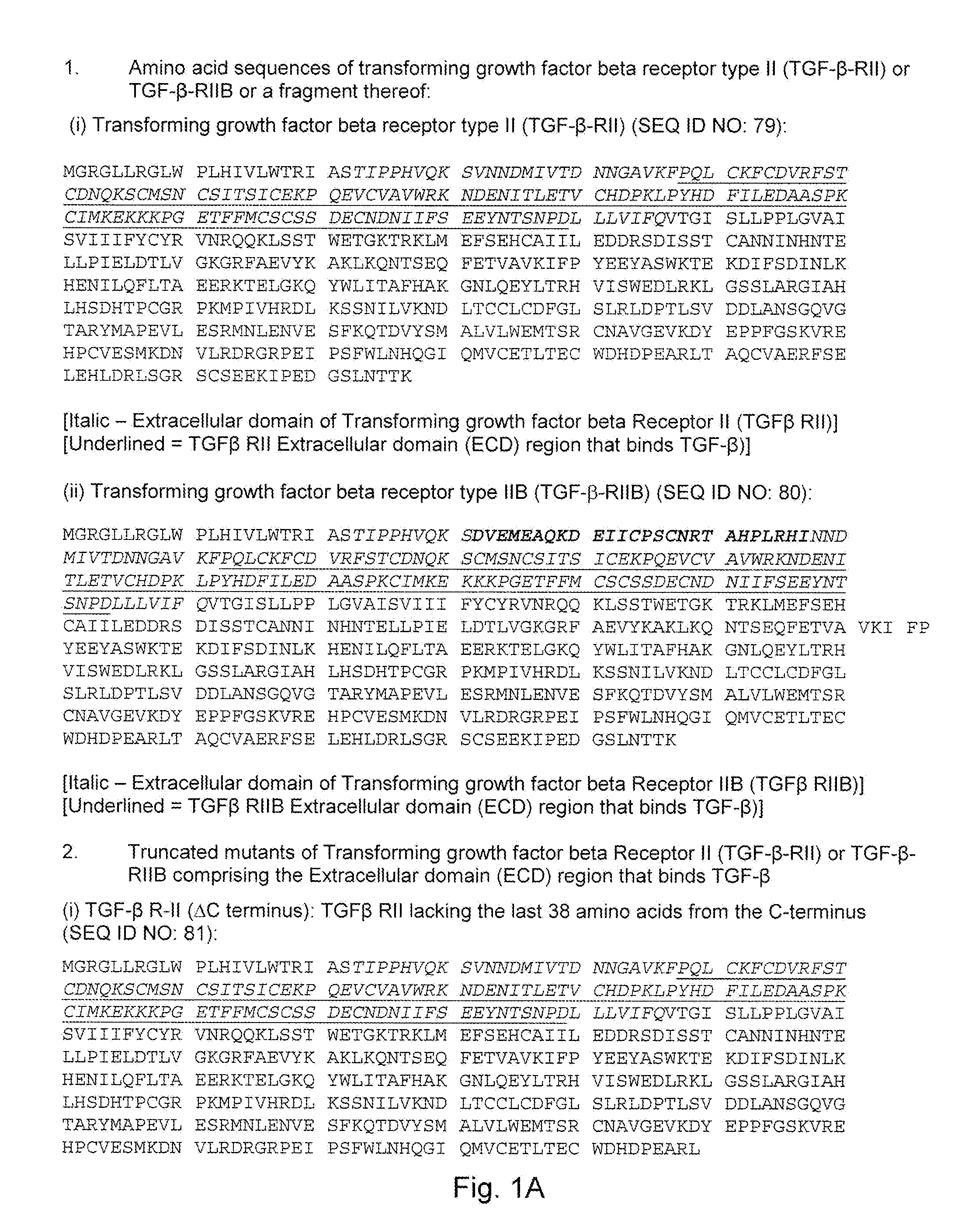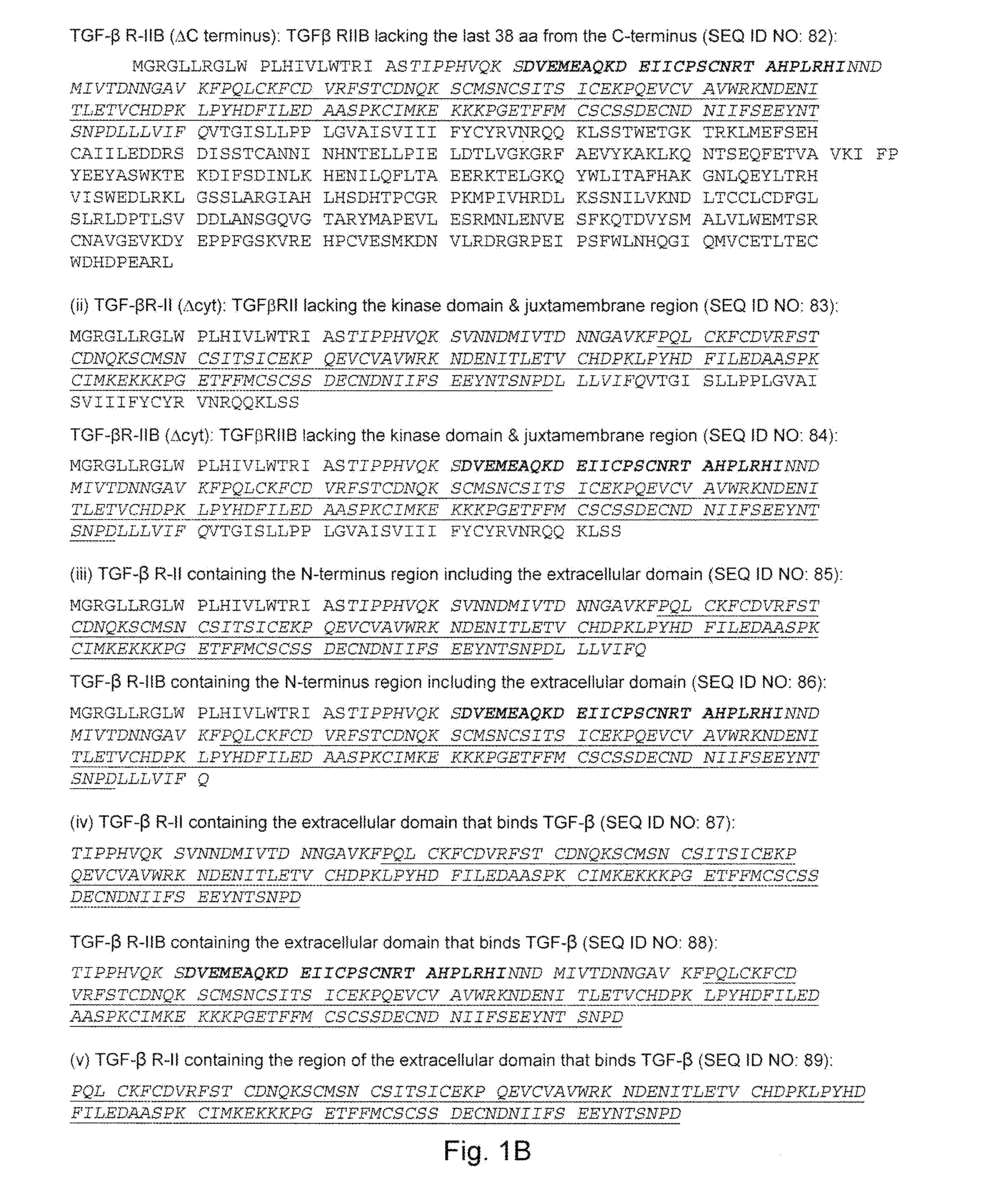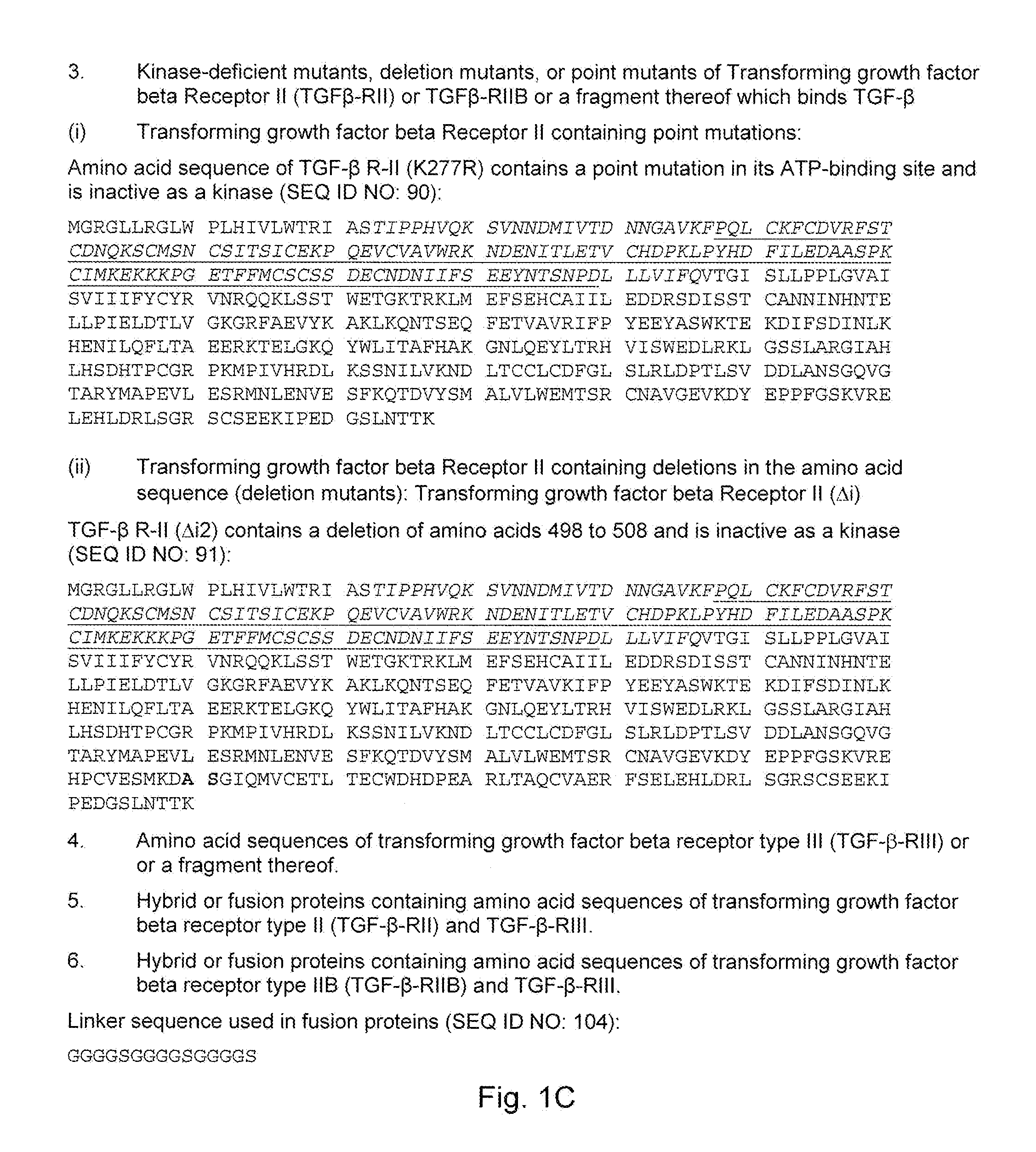Compositions and Methods for Targeted Immunomodulatory Antibodies and Fusion Proteins
- Summary
- Abstract
- Description
- Claims
- Application Information
AI Technical Summary
Benefits of technology
Problems solved by technology
Method used
Image
Examples
example 1
[0203]Counteracting Tumor Immune Tolerance via Antibody-mediated Depletion of CD4+ Regulatory T Cells Facilitates the Activation of Tumor-Reactive CD8+ T Cells and Enhances the In Vivo Antitumor Efficacy of Cytotoxic Anticancer Agents
[0204]Immunogenic death of tumor cells by chemotherapeutic agents can induce CD8+ T cell-mediated antitumor immunity. In response to specific chemotherapeutic agents, tumor cells exhibit the rapid translocation of intracellular calreticulin (CRT) to the cell surface where its aggregation provides a signal for the recognition and engulfment of dying tumor cells by antigen presenting dendritic cells (DCs). Treatment of mouse MB49 or human SW780 bladder cancer cells with doxorubicin, an anthracycline chemotherapeutic agent, induced rapid surface exposure of CRT that was detected by immunofluorescence cytometry of cells stained with Dylight 488-labeled anti-CRT antibody (FIG. 1a). To determine whether ex vivo treatment with doxorubicin induced an immunogeni...
example 2
[0212]Exemplary Targeted Immunomodulatory Antibodies & Fusion Proteins
[0213]A targeting moiety, including an antibody, can be coupled to an immunomodulatory moiety including a polypeptide derived from the extracellular domain of TGFBR2. Crosslinkers or activating agents for such coupling or conjugation are well known in the art. Alternatively, the fusion proteins of the invention can be synthesized using recombination DNA technology well known in the art where the coding sequences of various portions of the fusion proteins can be linked together at the nucleic acid level. Subsequently the fusion proteins of the invention can be produced using a host cell well known in the art. Examples of targeted immunomodulatory antibodies and fusion proteins are shown in FIGS. 1-33 and briefly described below.
[0214]In one embodiment, the present invention provides a molecule including a targeting moiety fused with an immunomodulatory moiety, wherein the targeting moiety specifically binds to a ta...
PUM
| Property | Measurement | Unit |
|---|---|---|
| Cell angle | aaaaa | aaaaa |
| Ectodomain | aaaaa | aaaaa |
| Antigenicity | aaaaa | aaaaa |
Abstract
Description
Claims
Application Information
 Login to View More
Login to View More - R&D
- Intellectual Property
- Life Sciences
- Materials
- Tech Scout
- Unparalleled Data Quality
- Higher Quality Content
- 60% Fewer Hallucinations
Browse by: Latest US Patents, China's latest patents, Technical Efficacy Thesaurus, Application Domain, Technology Topic, Popular Technical Reports.
© 2025 PatSnap. All rights reserved.Legal|Privacy policy|Modern Slavery Act Transparency Statement|Sitemap|About US| Contact US: help@patsnap.com



